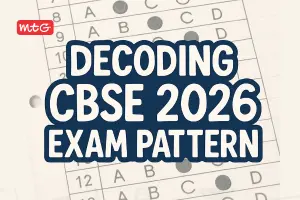
NCERT class 6 mathematics chapter 3 – “Playing with Numbers” introduces students to interesting methods to check divisibility and find the highest common factor and lowest common multiple. Students should practice multiple-choice questions (MCQs) to prepare for the objective questions that will be asked in the CBSE exams. For the CBSE exams, practice multiple-choice questions (MCQs) to prepare for the objective questions. We have offered Class 6 MCQ Questions on “Playing with Numbers” apart from offering comprehensive explanations. On many occasions, CBSE highlighted the role of MCQs as they play a major role in understanding the concepts thoroughly.
MCQs are quite different from subjective questions. Therefore, students should practice and understand how to find right answers in the MCQs. To revise the main concepts, students should practice all the MCQs with answers given. This will assist them in familiarizing with the kinds of questions that might appear in the board exams.
Previous – Whole Numbers Class 6 MCQS With Answers
Topics Covered in “Playing with Numbers”
- Factors and Multiples
- Prime and Composite Numbers
- Tests for Divisibility of Numbers
- Common Factors and Common Multiples
- Prime Factorisation
- Highest Common Factor
- Lowest Common Multiple
Check complete class 6 Maths MCQ – Class 6 Mathematics MCQs with Answers
CBSE Class 6 Mathematics Playing with Numbers MCQs – PDF Download
Answers –
Check the updated Syllabus – CBSE Class 6 Maths Syllabus 2024-25
Summary for NCERT Class 6 Mathematics Chapter 3 – “Playing with Numbers”
- How to identify factors and multiples
- A factor of a number is an exact divisor of that number
- Every number is a factor of itself
- 1 is a factor of every number
- Every factor of a number is less than or equal to the given number
- Every number is a multiple of each of its factors
- Every multiple of a given number is greater than or equal to that number
- Every number is a multiple of itself
- The number other than 1, with only factors namely 1 and the number itself, is a prime number
- Numbers that have more than two factors are called composite numbers
- Number 1 is neither prime nor composite
- The number 2 is the smallest prime number and is even
- Every prime number other than 2 is odd
- Two numbers with only 1 as a common factor are called co-prime numbers
- If a number is divisible by another number then it is divisible by each of the factors of that number
- A number divisible by two co-prime numbers is divisible by their product also
- Divisibility by 2,5 and 10 can be seen by just the last digit
- Divisibility by 3 and 9 is checked by finding the sum of all digits
- Divisibility by 4 and 8 is checked by the last 2 and 3 digits respectively
- Divisibility of 11 is checked by comparing the sum of digits at odd and even places
- If two numbers are divisible by a number then their sum and difference are also divisible by that number
- The Highest Common Factor (HCF) of two or more given numbers is the highest of their common factors
- The Lowest Common Multiple (LCM) of two or more given numbers is the lowest of their common multiples






























